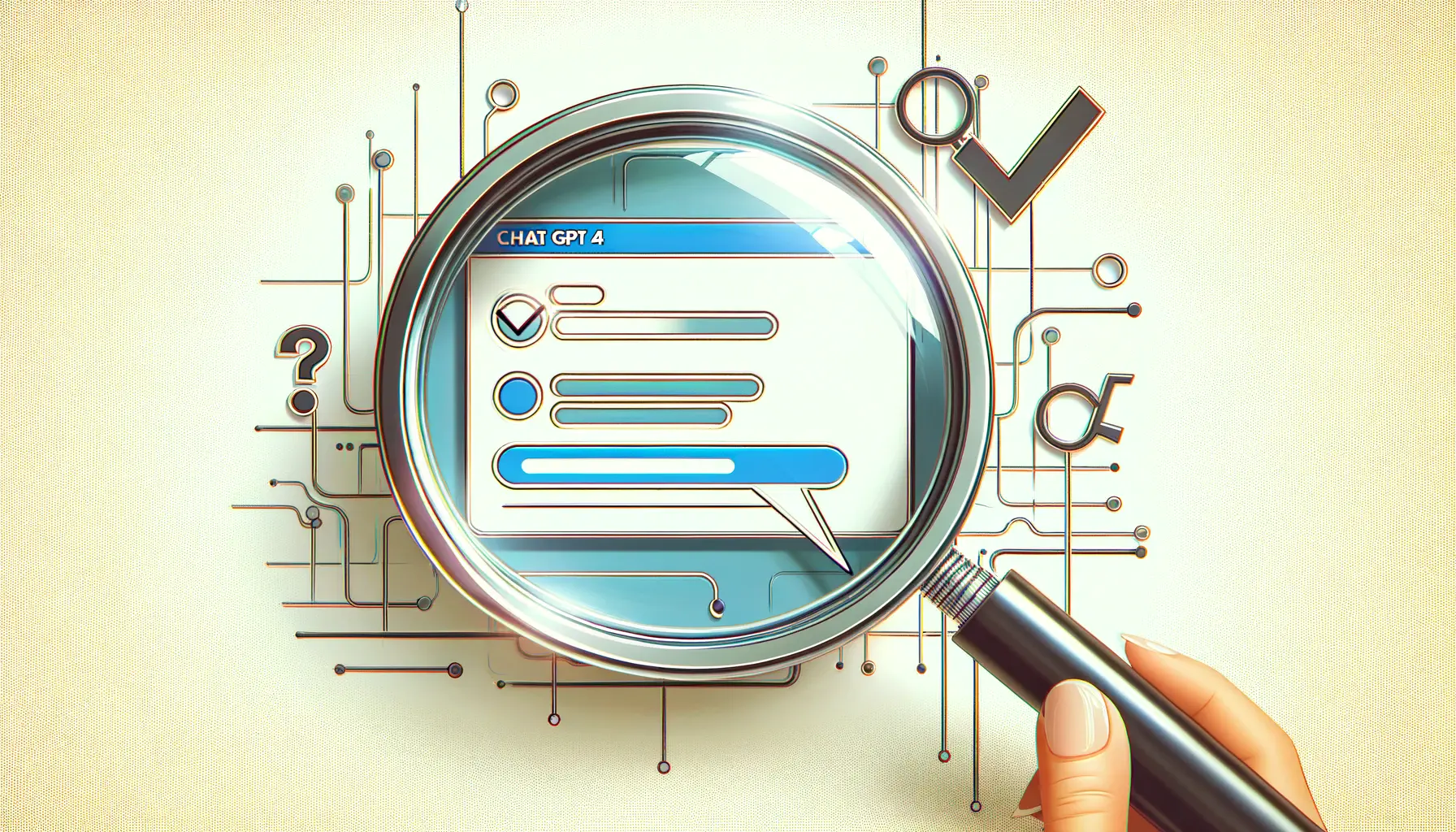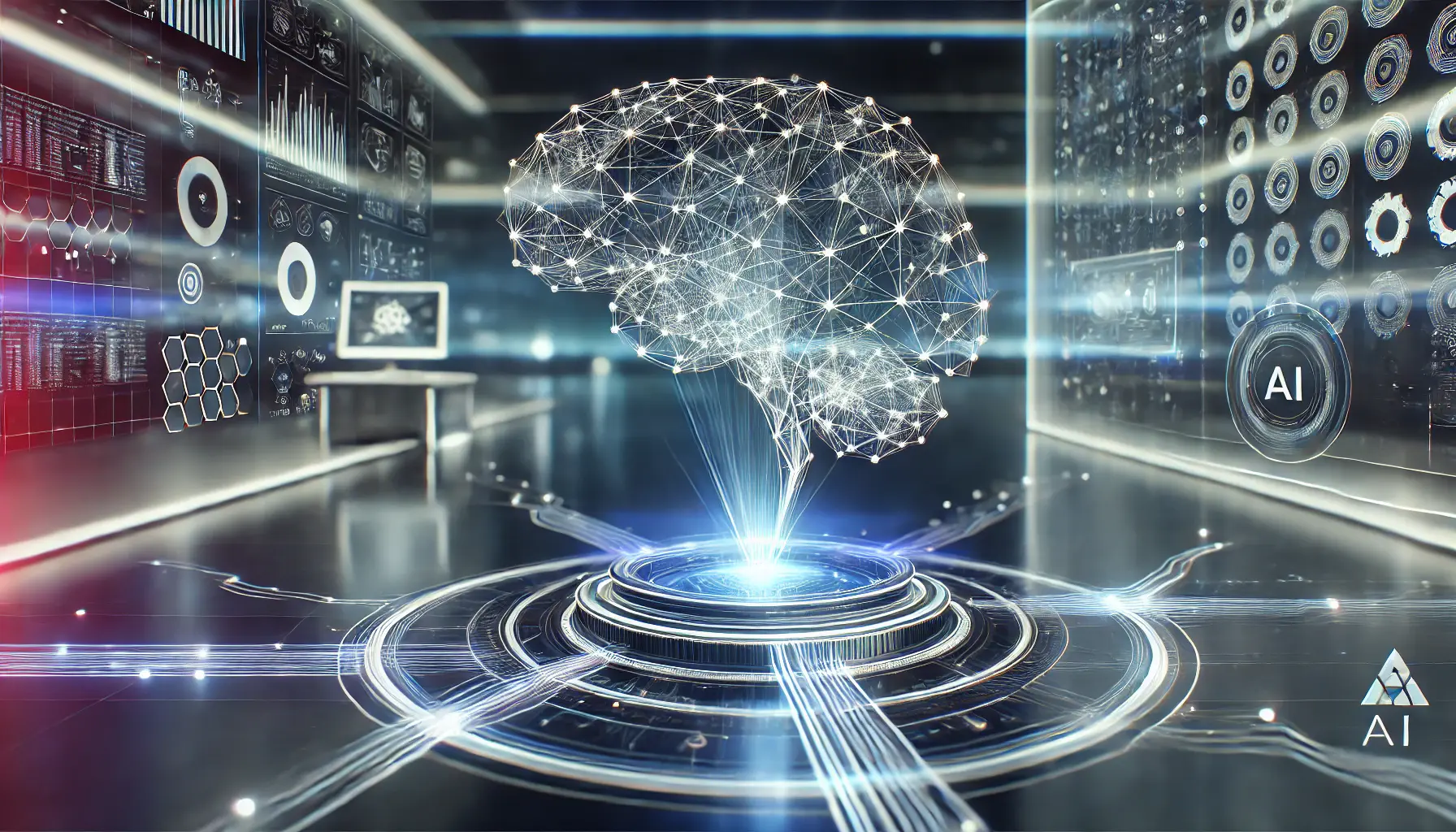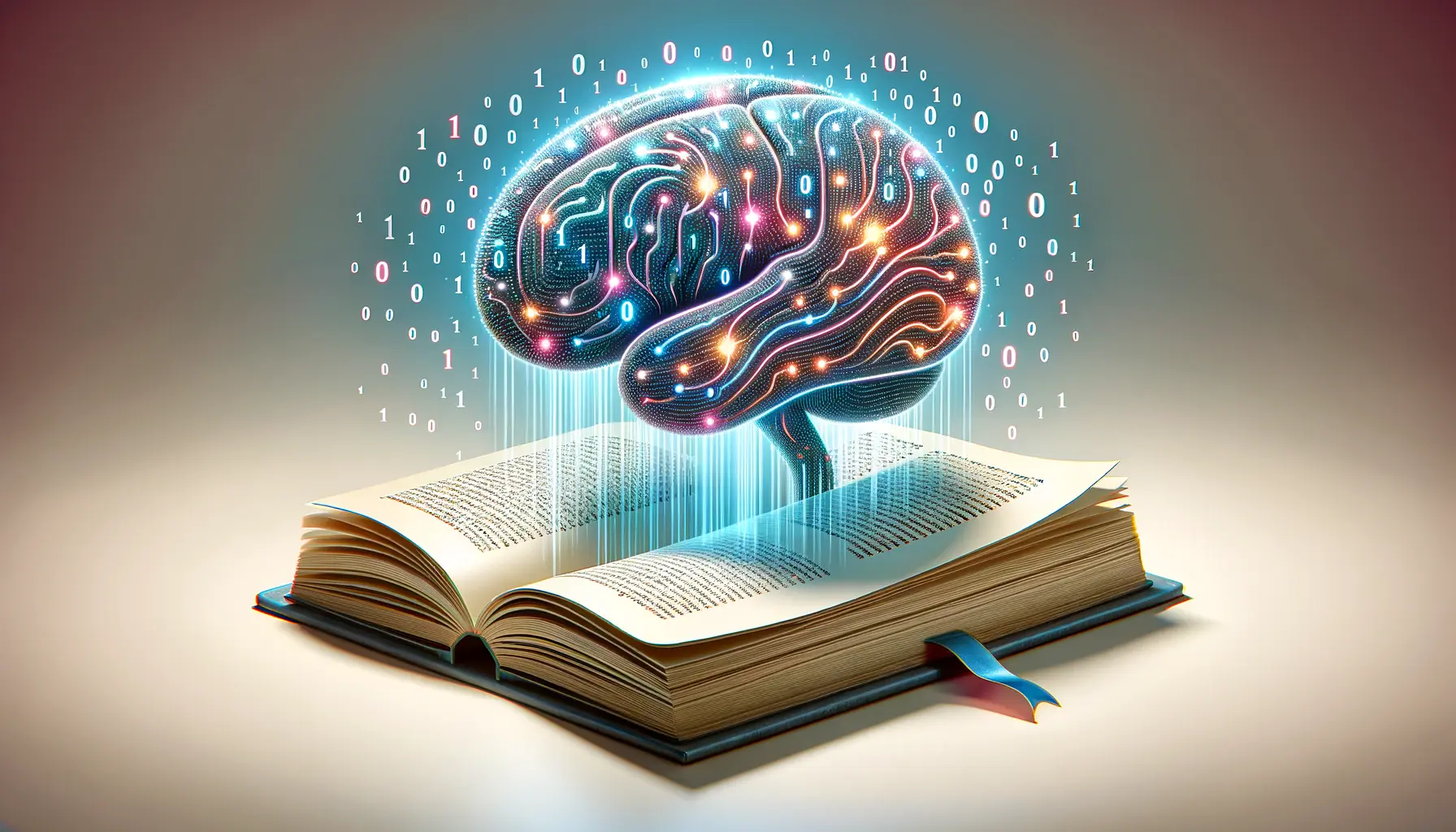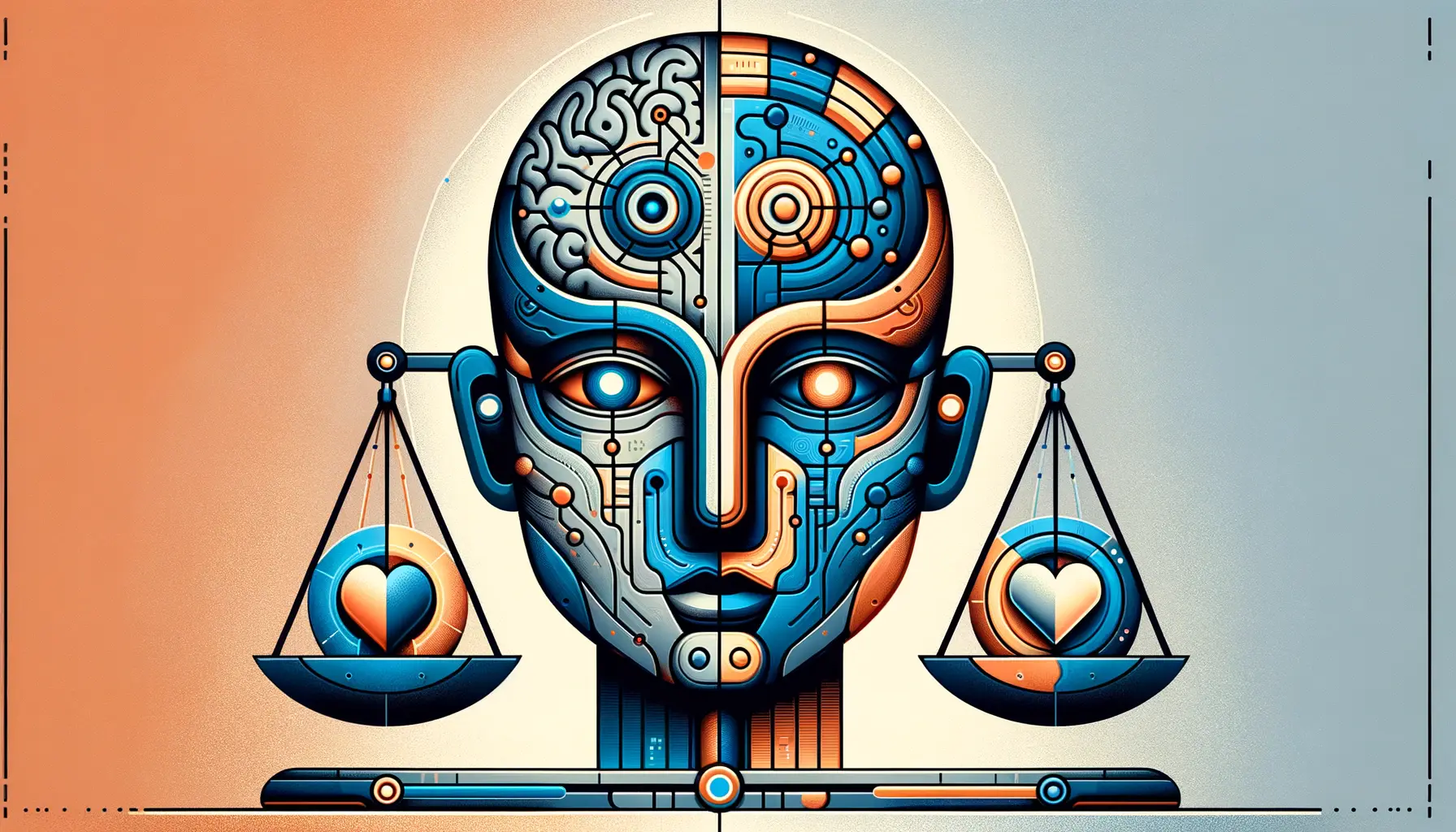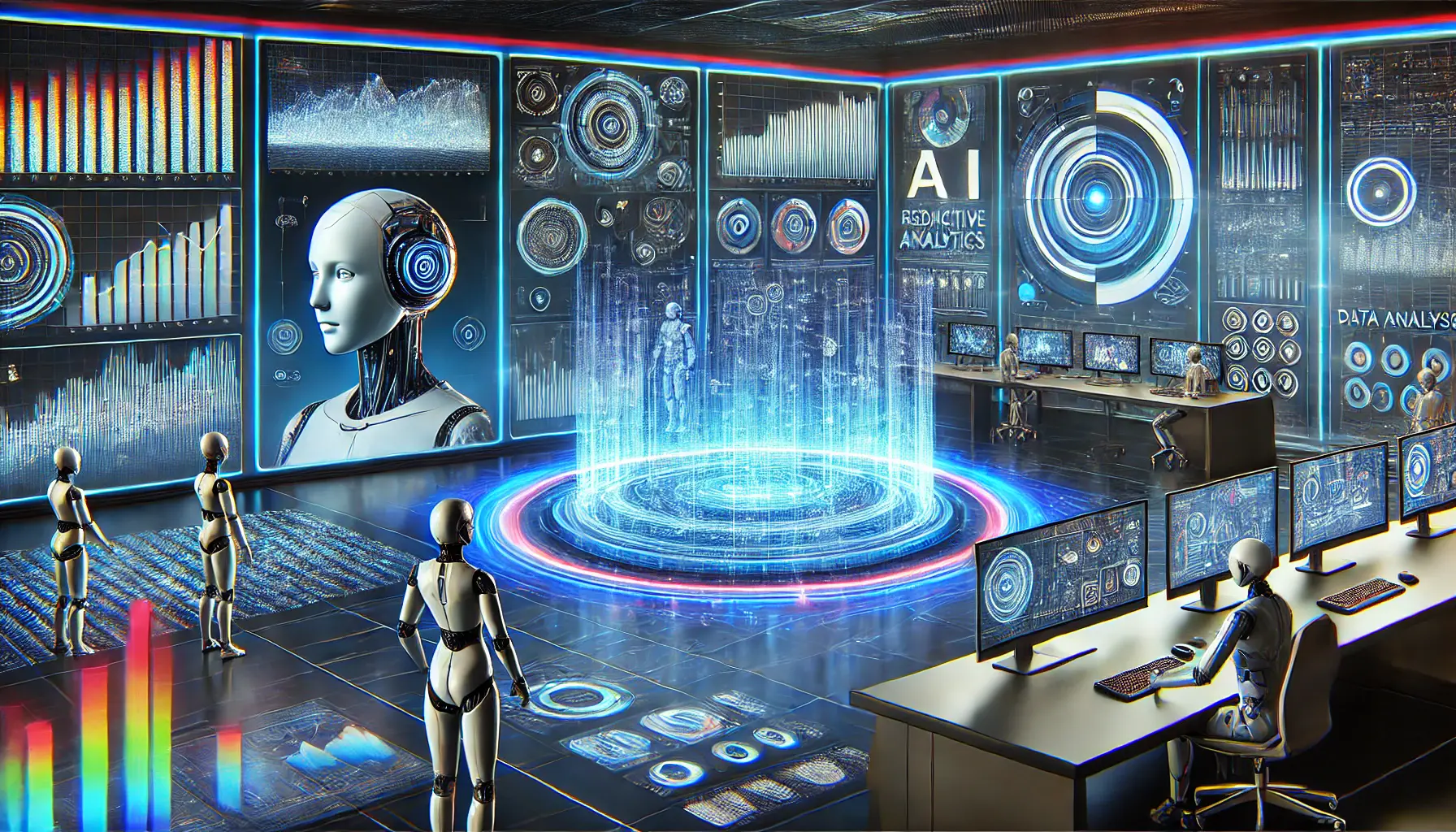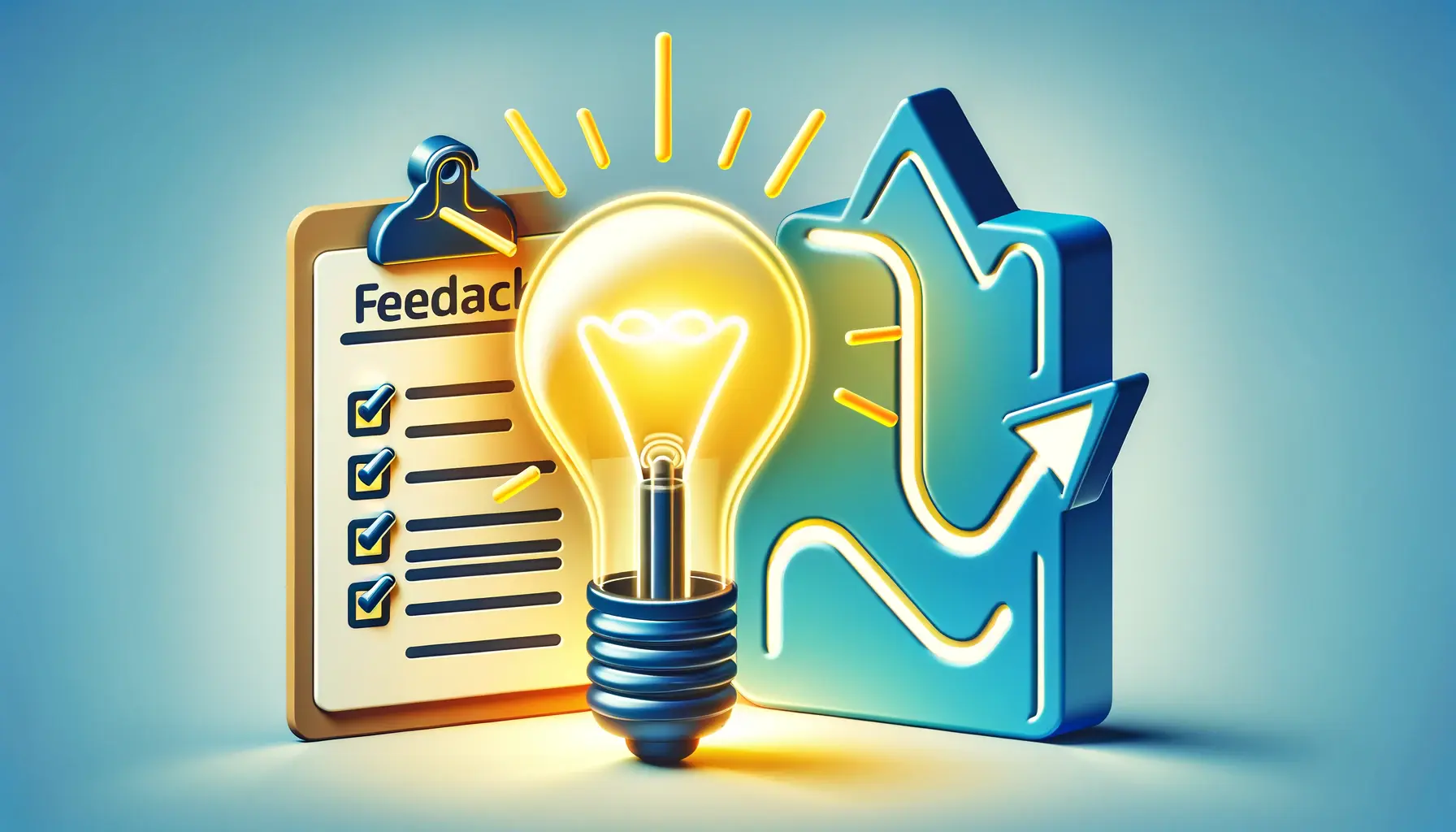The evolution of artificial intelligence has brought us to the brink of a new era where machines can understand, learn, and respond to human queries with astonishing accuracy.
Among the forefront of these advancements is ChatGPT 4, a model that has garnered attention for its ability to generate human-like text based on the prompts it receives.
The accuracy of ChatGPT 4’s responses not only showcases the model’s advanced capabilities but also raises questions about the reliability and trustworthiness of AI-generated content.
This article delves into the intricacies of ChatGPT 4, examining its accuracy across various domains and its implications for users and industries alike.
Accuracy in AI language models like ChatGPT 4 is not just about correct answers; it’s about understanding context, nuance, and the subtleties of human language.
The development of ChatGPT 4 by OpenAI represents a significant leap forward in natural language processing (NLP), enabling the model to provide responses that are not only accurate but also contextually relevant.
However, as with any technology, it’s crucial to scrutinize the limitations and challenges that come with it.
This article aims to provide a comprehensive overview of ChatGPT 4’s accuracy, exploring its strengths, weaknesses, and the ongoing efforts to enhance its performance.
- Understanding ChatGPT 4’s Technology
- Challenges in Measuring ChatGPT 4’s Accuracy
- Impact of ChatGPT 4 on Various Industries
- Enhancing ChatGPT 4’s Accuracy Through Feedback Loops
- Comparative Analysis of ChatGPT 4 with Previous Models
- Future Directions for ChatGPT 4 and AI Language Models
- Optimizing ChatGPT 4 for Educational Purposes
- Embracing the Future with ChatGPT 4
- FAQs on ChatGPT 4 Accuracy
Understanding ChatGPT 4’s Technology
The foundation of ChatGPT 4’s accuracy lies in its sophisticated architecture and the vast amount of data it has been trained on.
As a variant of the Generative Pre-trained Transformer models, ChatGPT 4 benefits from deep learning techniques that analyze and generate text based on the patterns and information it has learned during its training phase.
This section explores the technological underpinnings of ChatGPT 4 and how they contribute to its ability to accurately interpret and respond to user inputs.
At its core, ChatGPT 4 utilizes a transformer architecture, a breakthrough in machine learning that allows for more efficient handling of sequential data, such as text.
This architecture enables the model to consider the context of each word and phrase it processes, leading to more nuanced and coherent responses.
The training process involves feeding the model a diverse dataset, encompassing a wide range of topics, languages, and writing styles.
This extensive training is what empowers ChatGPT 4 to understand and generate responses that closely mimic human writing and thought processes.
Advancements in Natural Language Understanding
One of the key advancements of ChatGPT 4 is its enhanced natural language understanding (NLU).
NLU is a subset of NLP focused on the model’s ability to comprehend the intended meaning behind the words.
ChatGPT 4’s improved NLU capabilities mean it can grasp the nuances of language, including idioms, colloquialisms, and even humor.
This advancement is crucial for achieving high accuracy in responses, as it allows the model to interpret the context and subtleties of user queries more effectively.
Furthermore, ChatGPT 4’s ability to maintain context over longer conversations represents a significant improvement over previous models.
This feature is particularly important for applications requiring detailed discussions or explanations, such as educational tools, customer service bots, and content creation aids.
By retaining information from earlier in the conversation, ChatGPT 4 can provide more relevant and accurate responses, enhancing the user experience.
The accuracy of ChatGPT 4 is a testament to the advancements in AI and machine learning, showcasing the potential of technology to understand and generate human-like text.
Challenges in Measuring ChatGPT 4’s Accuracy
Evaluating the accuracy of an AI model like ChatGPT 4 involves complex considerations that go beyond simple right or wrong answers.
This part delves into the multifaceted nature of accuracy in AI responses, highlighting the challenges and methodologies involved in assessing ChatGPT 4’s performance.
Understanding these challenges is crucial for both users and developers to set realistic expectations and work towards continuous improvement.
The task of measuring the accuracy of ChatGPT 4’s responses is complicated by several factors, including the subjective nature of language and the diverse range of topics the model can address.
Unlike tasks with clear-cut answers, many queries to ChatGPT 4 involve opinions, advice, or creative content, where accuracy is not easily quantifiable.
Here, we explore the main challenges in evaluating ChatGPT 4’s accuracy and the efforts to overcome them.
Variability of User Queries
User queries can vary greatly in complexity, context, and subject matter, making it challenging to assess the model’s accuracy uniformly.
For instance:
- Simple factual questions may have straightforward, verifiable answers.
- Opinion-based queries require the model to generate responses that are subjective and may vary widely.
- Context-dependent questions necessitate an understanding of the conversation’s history or external knowledge.
This variability demands a flexible approach to accuracy assessment, one that considers the type of query and the appropriateness of the response.
Subjectivity and Contextual Relevance
Another challenge in measuring ChatGPT 4’s accuracy is the inherent subjectivity in many responses.
What might be considered a satisfactory answer by one user could be seen as inadequate by another.
This subjectivity is particularly pronounced in creative tasks, such as writing poetry or generating ideas, where personal taste plays a significant role.
Ensuring responses are contextually relevant and aligned with user expectations is a key focus for developers aiming to enhance ChatGPT 4’s accuracy.
To address these challenges, researchers and developers employ a variety of methods, including:
- User feedback mechanisms to gather subjective assessments of response quality.
- Automated testing on a diverse set of queries to evaluate consistency and relevance.
- Continuous training and model updates to refine understanding and output quality.
Impact of ChatGPT 4 on Various Industries
The advent of ChatGPT 4 has had a profound impact across a wide range of industries, revolutionizing how businesses interact with customers, automate processes, and leverage data for decision-making.
This section explores the transformative effects of ChatGPT 4’s accuracy and capabilities on several key sectors, highlighting both the opportunities and challenges it presents.
From enhancing customer service to driving innovation in content creation, ChatGPT 4’s influence is far-reaching.
Its ability to understand and generate human-like text has opened up new avenues for efficiency and creativity, making it a valuable asset for businesses and organizations worldwide.
Customer Service and Support
In the realm of customer service, ChatGPT 4 has been a game-changer.
By providing accurate, context-aware responses to customer inquiries, businesses can offer 24/7 support without the need for human intervention.
This not only improves customer satisfaction but also reduces operational costs.
Key benefits include:
- Instantaneous response to customer queries, improving engagement and satisfaction.
- Reduction in wait times and operational costs by automating routine inquiries.
- Personalized customer experiences through context-aware interactions.
However, the challenge lies in ensuring the AI’s responses remain accurate and relevant, especially for complex or sensitive issues that may require human empathy and understanding.
Content Creation and Media
For content creators and media outlets, ChatGPT 4 offers powerful tools for generating articles, reports, and creative writing.
Its ability to produce coherent, contextually relevant text on a vast array of topics enables rapid content creation, idea generation, and even editing assistance.
Benefits include:
- Streamlining the content creation process, saving time and resources.
- Generating creative ideas and drafts for writers and journalists.
- Enhancing research efficiency by summarizing and analyzing large volumes of information.
While ChatGPT 4 can significantly aid the content creation process, it’s important for creators to review and refine the AI-generated content to ensure accuracy, originality, and alignment with the intended message or tone.
Education and Learning
ChatGPT 4’s impact on education has been transformative, offering students and educators a versatile tool for learning, tutoring, and research.
Its ability to provide detailed explanations, generate practice questions, and summarize complex topics makes it an invaluable educational resource.
Highlights include:
- Personalized learning experiences tailored to individual student needs.
- Assistance with homework, essay writing, and study materials.
- Facilitating research by summarizing articles and synthesizing information.
Despite its benefits, the use of ChatGPT 4 in education requires careful oversight to ensure it supplements rather than replaces traditional learning methods and critical thinking skills.
The versatility of ChatGPT 4 makes it a transformative tool across industries, but its success hinges on the balance between automation and human oversight.
Enhancing ChatGPT 4’s Accuracy Through Feedback Loops
The continuous improvement of ChatGPT 4’s accuracy is a dynamic process that involves the collection and analysis of user feedback.
This iterative approach allows developers to refine the model’s responses, ensuring they become more precise and relevant over time.
This part of the article explores the mechanisms of feedback loops in enhancing the AI’s performance and the role users play in this process.
Feedback loops are essential for identifying areas where ChatGPT 4 can be improved, from understanding complex queries to generating more contextually appropriate responses.
By analyzing user interactions and feedback, developers can pinpoint specific challenges and opportunities for enhancing the model’s capabilities.
Collecting User Feedback
User feedback serves as a critical component in the development cycle of ChatGPT 4, providing direct insights into the accuracy and relevance of its responses.
Methods for collecting feedback include:
- User ratings and reviews on the quality of responses.
- Analysis of follow-up questions to determine if initial responses were satisfactory.
- Direct user reports on inaccuracies or areas for improvement.
This feedback is invaluable for training the model, allowing it to learn from its mistakes and better understand user expectations.
Implementing Changes Based on Feedback
Once feedback is collected, the next step is to implement changes to improve ChatGPT 4’s accuracy.
This process involves:
- Adjusting the model’s training data to address identified weaknesses.
- Refining algorithms to improve understanding and response generation.
- Testing updates to ensure they positively impact response quality.
Through this iterative process, ChatGPT 4 becomes increasingly adept at handling a wide range of queries, demonstrating the power of user feedback in driving AI advancements.
The Role of Continuous Learning
Continuous learning is fundamental to the success of ChatGPT 4, enabling the model to adapt to new information, trends, and user behaviors.
This ongoing process ensures that ChatGPT 4 remains a cutting-edge tool capable of delivering high-quality responses.
By embracing the principles of machine learning and user feedback, ChatGPT 4 continues to evolve, reflecting the dynamic nature of language and human communication.
The integration of feedback loops into the development of ChatGPT 4 highlights the collaborative effort between users and developers in shaping the future of AI communication tools.
As the model fine-tunes its understanding of human language, it paves the way for more accurate, reliable, and engaging interactions.
Feedback loops are crucial for the continuous improvement of ChatGPT 4, ensuring that the model evolves to meet user needs and expectations more effectively.
Comparative Analysis of ChatGPT 4 with Previous Models
The release of ChatGPT 4 marked a significant milestone in the evolution of AI language models, introducing enhancements in accuracy, understanding, and contextual awareness over its predecessors.
This part of the article provides a comparative analysis of ChatGPT 4 with previous iterations, highlighting the advancements that have been made and how they contribute to the model’s improved performance.
Understanding the differences between ChatGPT 4 and earlier versions is crucial for appreciating the strides made in AI technology.
These improvements not only enhance user experience but also expand the potential applications of ChatGPT in various fields.
Advancements in Natural Language Processing
One of the key areas where ChatGPT 4 surpasses its predecessors is in natural language processing (NLP).
The advancements in NLP have enabled ChatGPT 4 to better understand the nuances of human language, resulting in:
- Greater accuracy in interpreting user queries, even when they involve complex or abstract concepts.
- Improved ability to maintain context over longer conversations, providing responses that are more coherent and relevant.
- Enhanced understanding of different dialects and colloquialisms, making the model more accessible to a global audience.
These improvements are a testament to the ongoing research and development efforts aimed at creating AI models that can communicate more naturally and effectively.
Increased Accuracy and Reliability
ChatGPT 4’s increased accuracy and reliability are among its most notable improvements.
Through extensive training on a diverse dataset, the model has achieved:
- A reduction in the generation of incorrect or irrelevant responses.
- Better performance in generating factual content, supported by a more sophisticated understanding of the world.
- Enhanced ability to generate creative and engaging content that resonates with users.
This leap in performance has made ChatGPT 4 a more trustworthy and versatile tool for users seeking reliable information and creative inspiration.
Customization and Flexibility
Another area where ChatGPT 4 excels is in its customization and flexibility.
Unlike its predecessors, ChatGPT 4 offers users more control over the tone, style, and format of the responses.
This customization capability allows for a more personalized interaction, catering to the specific needs and preferences of each user.
Whether it’s providing technical support, tutoring on a subject, or engaging in creative writing, ChatGPT 4 adapts to the task at hand, showcasing its versatility across a wide range of applications.
The comparative analysis of ChatGPT 4 with previous models underscores the significant progress that has been made in the field of AI.
As technology continues to evolve, we can expect future versions to build on these advancements, further enhancing the capabilities of AI language models.
The evolution from previous models to ChatGPT 4 highlights significant advancements in accuracy, understanding, and user interaction, setting a new standard for AI language models.
Future Directions for ChatGPT 4 and AI Language Models
The rapid advancements in ChatGPT 4 and AI language models signal a promising future for artificial intelligence in understanding and generating human language.
As we look ahead, several key areas are poised for further development, promising to enhance the capabilities of AI models even more.
This section explores the potential future directions for ChatGPT 4 and AI language models, focusing on the innovations and challenges that lie ahead.
The evolution of ChatGPT 4 is a continuous journey, with each update bringing us closer to AI that can seamlessly integrate into our daily lives, offering assistance, information, and even companionship.
The future of AI language models is not just about improving accuracy but also about expanding their utility, ethical use, and integration into society.
Enhanced Contextual Understanding and Personalization
One of the primary goals for future developments is to enhance the contextual understanding and personalization capabilities of ChatGPT 4.
By achieving a deeper understanding of the context in which queries are made, AI models can provide more accurate and relevant responses.
Future advancements may include:
- Improved algorithms for understanding complex contexts and user intents.
- Personalization features that adapt responses based on user history and preferences.
- Greater sensitivity to cultural and linguistic nuances, enabling more inclusive and accessible interactions.
These enhancements will make AI models like ChatGPT 4 more intuitive and helpful, further blurring the lines between human and machine communication.
Addressing Ethical and Privacy Concerns
As AI language models become more integrated into our lives, addressing ethical and privacy concerns becomes increasingly important.
Future developments will need to focus on:
- Implementing robust privacy measures to protect user data and interactions.
- Developing ethical guidelines to prevent misuse and ensure responsible use of AI.
- Creating mechanisms for transparency and accountability in AI-generated content.
These efforts will be crucial for maintaining trust in AI technology and ensuring its benefits are realized responsibly and equitably.
Expanding Applications and Accessibility
The potential applications for ChatGPT 4 and future AI language models are vast and varied.
From revolutionizing education and healthcare to transforming creative industries and customer service, the possibilities are endless.
Future directions include:
- Developing specialized models for different industries and applications.
- Enhancing accessibility features to support users with disabilities.
- Exploring new ways AI can support sustainable development and address global challenges.
By expanding the applications and accessibility of AI language models, we can unlock new opportunities for innovation and improvement in virtually every aspect of society.
While the future of ChatGPT 4 and AI language models is bright, it is essential to navigate the path forward with careful consideration of ethical, privacy, and societal implications.
Optimizing ChatGPT 4 for Educational Purposes
The integration of ChatGPT 4 into educational settings offers a unique opportunity to enhance learning experiences, providing personalized assistance and access to a wealth of knowledge.
As educators and developers work to optimize ChatGPT 4 for educational purposes, they focus on tailoring the model to meet the diverse needs of students and teachers alike.
This final section explores the strategies and considerations involved in optimizing ChatGPT 4 for education, highlighting its potential to transform traditional learning environments.
By leveraging ChatGPT 4’s capabilities, educational institutions can create more engaging, interactive, and customized learning experiences.
However, achieving this requires careful planning, implementation, and ongoing evaluation to ensure the technology effectively supports educational goals.
Personalized Learning Experiences
One of the key advantages of ChatGPT 4 in education is its ability to offer personalized learning experiences.
By analyzing students’ responses and learning styles, ChatGPT 4 can adapt its explanations, questions, and content to suit individual needs.
Strategies for personalization include:
- Adapting difficulty levels of questions and exercises based on student performance.
- Providing targeted feedback and explanations to address specific areas of difficulty.
- Offering a variety of learning resources to cater to different learning preferences.
This personalized approach can help students grasp complex concepts more effectively and foster a more inclusive learning environment.
Supporting Educators
ChatGPT 4 also serves as a valuable tool for educators, assisting with lesson planning, grading, and providing supplemental content to enrich curriculum offerings.
To optimize ChatGPT 4 for these purposes, developers are focusing on:
- Creating interfaces that allow teachers to easily integrate AI-generated content into their teaching materials.
- Developing features that automate routine tasks, such as grading and generating quizzes, freeing up teachers to focus on more interactive and personalized teaching.
- Ensuring the accuracy and appropriateness of content generated for educational purposes.
These tools can enhance the efficiency and effectiveness of teaching, providing educators with more time and resources to dedicate to their students.
Encouraging Critical Thinking and Creativity
While ChatGPT 4 can provide immediate access to information and assistance, optimizing it for education also involves encouraging critical thinking and creativity among students.
This includes:
- Designing prompts and activities that encourage students to question and explore beyond the AI’s responses.
- Using ChatGPT 4 as a tool for brainstorming and creative projects, where students can collaborate with the AI to generate new ideas and solutions.
- Teaching students to critically evaluate the information provided by AI, fostering digital literacy and responsible use of technology.
By integrating ChatGPT 4 into the educational process in a thoughtful and strategic manner, educators can enhance learning outcomes, promote engagement, and prepare students for a future where AI plays an increasingly prominent role.
Optimizing ChatGPT 4 for educational purposes requires a balanced approach that enhances learning while promoting critical thinking, creativity, and digital literacy.
Embracing the Future with ChatGPT 4
The journey through the capabilities, impacts, and future directions of ChatGPT 4 reveals a landscape rich with potential and fraught with challenges.
As we stand on the precipice of a new era in artificial intelligence, the accuracy of ChatGPT 4 responses not only signifies a milestone in technological advancement but also heralds a shift in how we interact with machines.
This conclusion aims to weave together the insights gleaned from our exploration, offering a comprehensive perspective on the role of ChatGPT 4 in shaping the future.
The Path to Enhanced Accuracy
At the heart of ChatGPT 4’s evolution is the relentless pursuit of accuracy—a quest that has seen this AI model surpass its predecessors and redefine the benchmarks for success in natural language processing.
The strides made in understanding context, nuance, and the intricacies of human language have positioned ChatGPT 4 as a pivotal tool in various domains, from education and customer service to content creation and beyond.
Yet, the journey does not end here.
The ongoing refinement of ChatGPT 4, driven by user feedback and continuous learning, promises even greater levels of accuracy and reliability in the responses it generates.
Challenges and Considerations
Despite its impressive capabilities, ChatGPT 4’s journey is not without its challenges.
Issues of ethical use, privacy, and the potential for misuse loom large, demanding vigilant oversight and the development of robust frameworks for governance.
Moreover, the quest for accuracy must be balanced with the need for creativity, empathy, and the human touch—qualities that AI, for all its advances, cannot fully replicate.
As we navigate these challenges, the dialogue between technology and humanity will shape the trajectory of ChatGPT 4 and its successors.
Looking Ahead
The future of ChatGPT 4 and AI language models is a tapestry of limitless possibilities.
As we look forward, several key themes emerge:
- The integration of AI into daily life, transforming how we work, learn, and communicate.
- The balance between technological advancement and ethical considerations, ensuring that AI serves the greater good.
- The role of AI in addressing global challenges, from education and healthcare to sustainability and beyond.
In this future, the accuracy of ChatGPT 4 responses will continue to be a cornerstone of its value, serving as a catalyst for innovation and a bridge between human creativity and machine efficiency.
Conclusion
As we conclude our exploration of ChatGPT 4, it is clear that this AI model is more than just a technological marvel; it is a reflection of our aspirations, challenges, and the endless quest for knowledge.
The accuracy of ChatGPT 4 responses, while a measure of its technical prowess, also symbolizes the potential for AI to enhance our lives in profound ways.
By embracing this potential, we can unlock new horizons of possibility, navigating the future with a sense of wonder and a commitment to responsible innovation.
In the end, the story of ChatGPT 4 is not just about the accuracy of its responses but about the dialogue it enables between us and the ever-evolving world of artificial intelligence.
FAQs on ChatGPT 4 Accuracy
Explore common questions about the accuracy of ChatGPT 4, offering insights into its performance and capabilities.
ChatGPT 4 is significantly more accurate than its predecessors, with improvements in understanding context, nuance, and complex queries.
While highly versatile, ChatGPT 4’s accuracy varies by query complexity and subject matter, excelling in general knowledge and context understanding.
Yes, ChatGPT 4 utilizes user feedback and continuous learning to refine its responses, enhancing accuracy and relevance over time.
Challenges include the subjective nature of language, the vast range of potential queries, and ensuring contextually relevant responses.
ChatGPT 4 offers robust performance across many languages, though accuracy can vary based on the available training data for each language.
ChatGPT 4 leverages advanced NLP techniques to interpret and respond to complex queries, striving for coherent and contextually appropriate answers.
Through fine-tuning and specific training, ChatGPT 4 can be optimized for particular domains or applications, enhancing its accuracy for specialized tasks.
AI ethics guide the development and deployment of ChatGPT 4, ensuring accuracy does not compromise privacy, security, or ethical standards.
